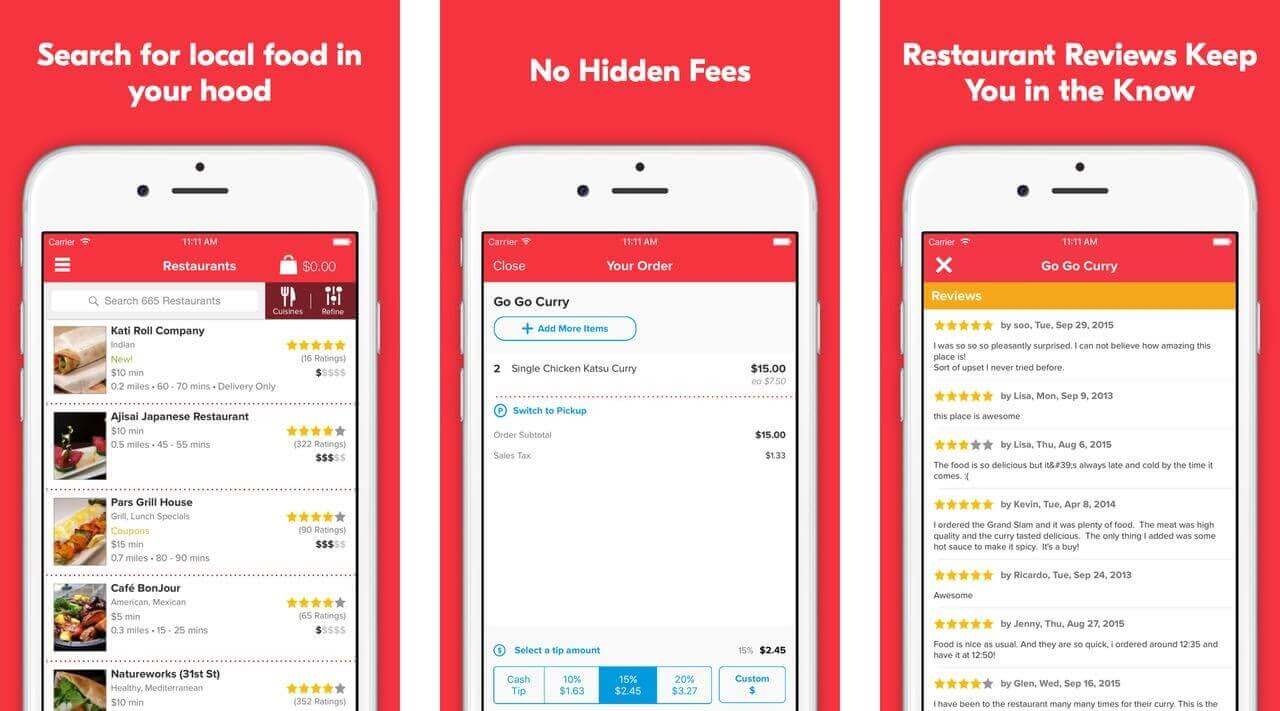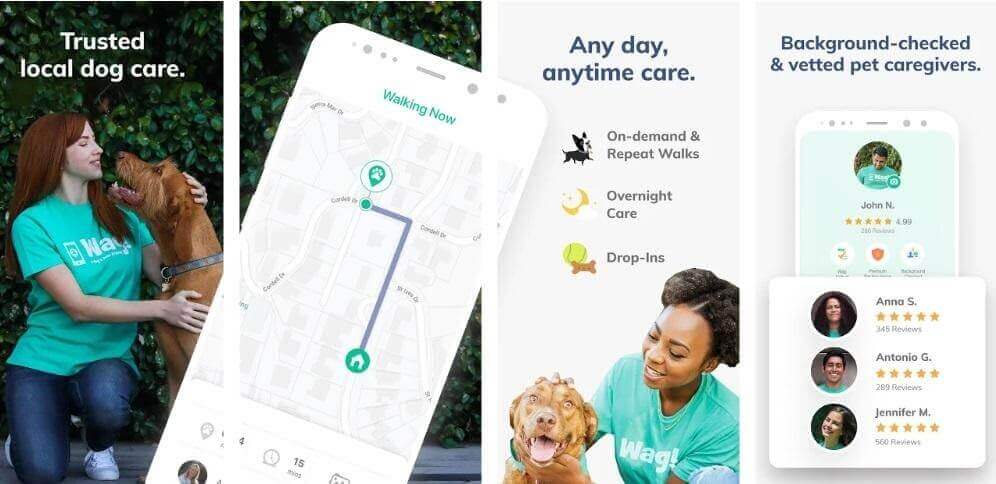How much does an on-demand mobile app cost?
- What Is An On-Demand Service App?
- How does an on-demand service app work?
- Types of on-demand service apps
- The most successful categories of on-demand service apps
- Taxi-hailing
- Logistic
- Food delivery
- Dog walking
- Medical cannabis delivery
- Telemedicine
- How to build an on-demand service mobile app: essential features
- On-demand app development cost
- Conclusion
Imagine that you came home after an exhausting day in the office. The only thing you are dreaming about now is a slice of pizza with double cheese. At the same time, you are too tired to cook it. In this case, many of us will order pizza via UberEats or another on-demand food delivery app.
Thanks to on-demand mobile services, we can use mobile apps to hail a taxi, receive a consultation with a doctor, and even order medical marijuana delivery. The reason why on-demand service mobile apps are top-rated among users is that they save time and effort. Due to its flexibility, an on-demand business model suits any industry, from cargo transportation to dog walking.
If you are considering developing an on-demand mobile app for your organization, you need to be aware of on-demand industry leaders, essential app features, and the development costs listed in this on-demand app development guide.
But first, let’s put the record straight and find out what an on-demand mobile app is.
What Is An On-Demand Service App?
Such mobile applications perform as a mediator to connect buyers and sellers. This means that, when a customer needs a particular service, one can find a necessary service provider, order service via the app, and even pay for it. Then, on-demand mobile apps charge a small fee on each order made via the app.
How does an on-demand service app work?
To explain how on-demand mobile applications work here’s an example of QuePro, an on-demand service app we recently developed.
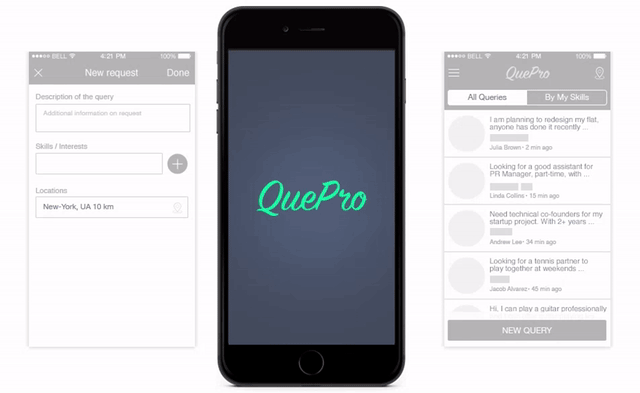
- A service provider lists skills and expertise via a Vendor account
- A buyer places a request with a detailed description of the service one is seeking
- A service provider answers the buyer’s request, which allows both parties to start communication via built-in messenger
- A buyer pays for the on-demand app services via a build-in payment gateway
- Also, a buyer can place a review and rate the service provider
Types of on-demand service apps
On-demand service mobile apps differ from the categories of sellers and buyers. Currently, there are three main types of on-demand app end-users:
- Business to customer (B2C)
In this category, enterprises provide services to individuals. There are many examples of B2C on-demand mobile apps, including UberEats, Booking.com, and Netflix.
- Business to business (B2B)
Organizations connect with other organizations to seek profit. Such applications include transportation services, hiring, banking, etc. Good examples of B2B on-demand service apps are Catalant, Eventio, and Cargomatic.
- Customer to customer (C2C)
C2C on-demand mobile apps gather individuals who provide services to other individuals. Thanks to C2C mobile marketplaces, you can book someone to walk your dog via Rover or rent a flat via Airbnb.
The most successful categories of on-demand service apps
Consider the following categories for your on-demand service startup:
Taxi-hailing
After Uber’s success, more and more tech startups want to enter the taxi booking app market and become successful. Despite the presence of big players, the market of on-demand taxi-hailing applications remains a good prospect for even young startups. To learn more about taxi-booking app development, read our previous article.
READ ALSO:
UNDER THE HOOD OF UBER: THE TECH STACK AND SOFTWARE ARCHITECTURE
HOW TO BUILD AN APP LIKE UBER: STEPS, FEATURES, AND COSTS
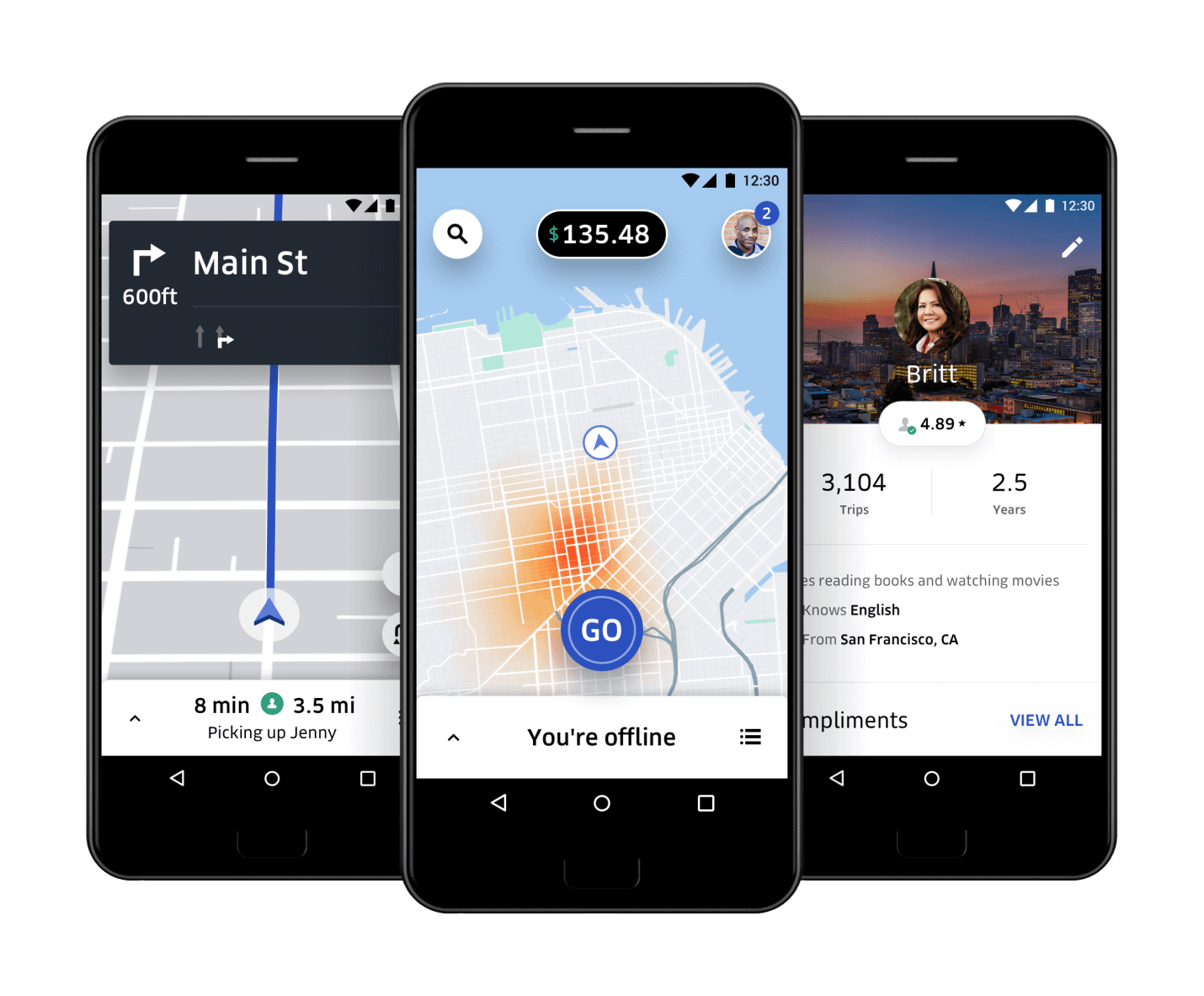
[Source]
Free E-Book on Taxi App Development
Download NowLogistic
This type of on-demand app provides businesses with an opportunity to find reliable transportation service providers. Since most logistics mobile apps include integrated GPS, organizations can track the location of their orders or commodity supply.
UBER FOR TRUCKS APP DEVELOPMENT: ESSENTIAL FEATURES AND COSTS
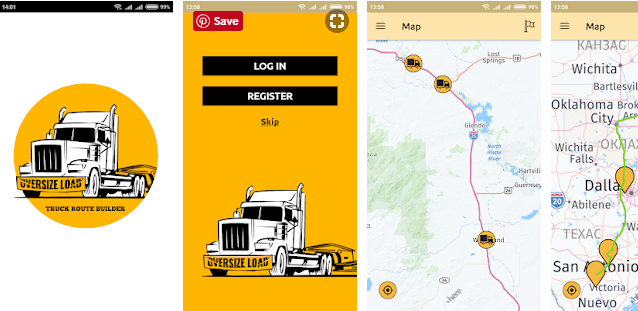
[Our GPS route planning and navigation app]
Food delivery
Recent research shows that the on-demand food delivery market is estimated to grow at a CAGR of 27.9% and reach $16,605 million by 2023. Examples such as UberEats, GrubHub, and Postmates show that on-demand food delivery will remain popular among customers. You can find out more about food delivery app development and monetization strategies in one of our articles.
[Source]
CASE STUDY – OUR SUCCESS STORY:
Alfred Ibiza case study: How we developed a food ordering platform
Dog walking
Also known as Uber for dogs, dog walking apps allow pet lovers to schedule a walk for their pets. The average price of a dog walking service starts from $15, while mobile apps charge a 5% fee per walk. The main industry leaders, Rover and Wag apps, generated $30 million annual revenue in total. When developing a dog-walking app, consider our tips from the article Dog Walking App Development Guide.
[Source]
Medical cannabis delivery
While many countries have decriminalized marijuana for medical and recreational use, an on-demand medical cannabis delivery app might be an excellent idea for your tech startup. However, to provide such services, you need to learn about your government regulations toward marijuana transportation and get the necessary licenses, unless you intend to break the law. In this blog post, we describe steps to starting a legal medical marijuana delivery business, and development stages.
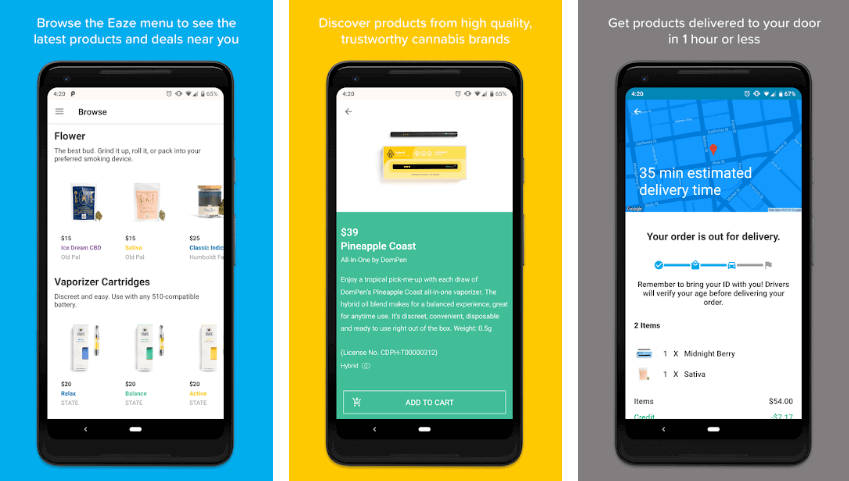
[Source]
Telemedicine
When looking for ideas for your on-demand service mobile app, don’t forget about the telemedicine industry. Telemedicine mobile applications, also known as doctor-on-demand, connect medical professionals with people who are seeking medical consultation. App users can find a necessary specialist, schedule an appointment, and receive a consultation via video call in the comfort of their homes. However, to make your app legit, you need to follow HIPAA and GDPR guidance concerning sensitive personal data.
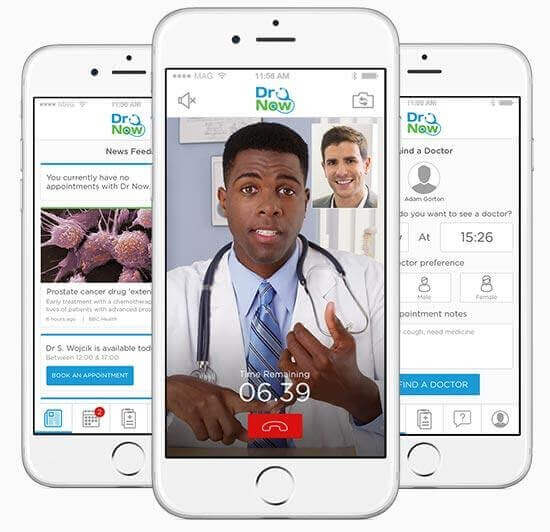
[Source]
Considering Developing a Healthcare Mobile App?
Download Free EbookHow to build an on-demand service mobile app: essential features
From a developer’s point of view, on-demand service apps work as a marketplace with numerous buyers and sellers. Thus, your app will consist of three parts:
- An app for buyers, where consumers search for the service they need, see reviews, pricing, and track orders
- An app for service providers, where the companies list their services and communicate with clients
- An admin panel that allows you to group the services and providers, manage feed, track payments, allow user access, etc.
Before hiring on-demand app developers, learn about the main features of your project.
| Feature | Description | Estimation in hours |
| User registration and profile | This feature is essential for your personalized on-point service. Not only will it continuously provide you with behavioral info from the user, but it will also help you to keep track of their activities. | Design – 10 h BackEnd – 24 h Android/iOS – 40 h |
| Map integration | For on-demand service, the location of its customers is another cornerstone. It’ll work for both the customer searching for service and service providers. | Design – 4 h BackEnd – 16 h Android/iOS – 8 h |
| Filters and lists | Being able to find the necessary service via catalog is a must. For better searching, add different filters. | Design – 12 h BackEnd – 16 h Android/iOS – 40 h |
| Vendor profile and service page | Here is shown a detailed description of a chosen company, its services, customer reviews, and photos. | Design – 16 h BackEnd – 16 h Android/iOS – 32 h |
| Shopping cart and payment gateway | Allow app users to add a service to the shopping cart and pay for it via a built-in payment gateway. | Design – 8 h BackEnd – 16 h Android/iOS – 24 h |
| Push Notifications | Inform users about order status, new messages, and other essential updates. | Design – 2 h BackEnd – 40 h Android/iOS – 32 h |
On-demand app development cost
On-demand mobile apps are complex projects with different user roles. This factor impacts the cost of app development. According to our previous estimations of on-demand service apps, it might take 8 months of development and cost from $70K per mobile platform. To receive a detailed estimate, use our project cost calculator.
A GUIDE ON HOW TO CREATE A TELEMEDICINE APP LIKE DOCTOR-ON-DEMAND
Conclusion
People will always need to get things done, and with the current rhythm of life, on-demand services may eventually become, if not already, a complete on-demand economy.
So, is it worth even trying to create an on-demand app? Definitely. To achieve this, choose one of the most prospective niches from this article, consider the app’s essential features and fill in our contact form.
What solutions can we offer?
Find Out More
